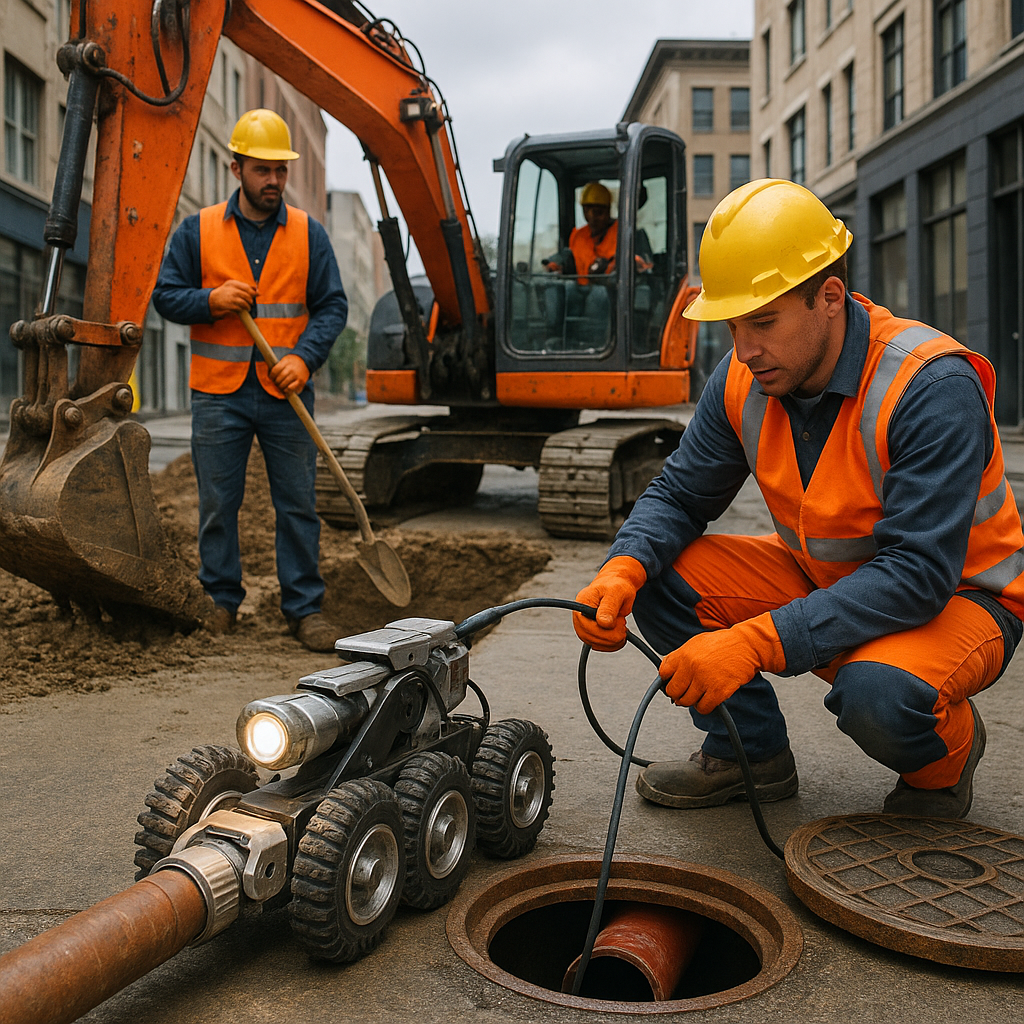Navigating Sewer Inspection Business Licensing in 2024
Explore the essentials of sewer inspection business licensing, focusing on tech, regulations, and market trends in 2024.

Navigating Sewer Inspection Business Licensing in 2024
The sewer inspection industry is witnessing transformative changes in 2024. With technological advancements, evolving regulations, and growing market demand, understanding the nuances of business licensing is crucial for both new entrants and seasoned professionals. This article delves into the essential aspects of sewer inspection business licensing, offering insights into technology, regulations, market opportunities, and best practices.
The Role of New Technologies in Licensing
Advanced Inspection Systems
In 2024, the sewer inspection landscape is dominated by cutting-edge technologies. Robotic systems equipped with high-resolution cameras, 3D mapping, and AI-powered automated defect detection are setting new standards in the industry. Key features include:
- 4K Imaging: Provides unparalleled clarity and detail, essential for accurate inspections.
- Pan-and-Tilt Camera Capabilities: Enhances maneuverability and thoroughness in complex sewer networks.
- GPS Integration: Facilitates precise pipe location tracking, crucial for efficient operations.
Licensing Implications
To obtain or renew a sewer inspection business license, professionals must demonstrate proficiency with these advanced tools. Training programs and certifications have become integral, ensuring operators are well-versed in modern inspection technologies.
Understanding Industry Regulations and Standards
Environmental and Safety Standards
Stringent environmental regulations mandate regular sewer inspections to prevent leaks, blockages, and contamination. These regulations not only drive the demand for advanced inspection technologies but also influence licensing requirements.
- Compliance Requirements: Licensing involves adherence to local or national wastewater management regulations, emphasizing safety and environmental standards.
- Operator Proficiency: Demonstrating competence with modern equipment is a licensing prerequisite.
Market Trends and Opportunities
Growth and Innovation
The sewer inspection market is projected to grow at a CAGR of 5.7% through 2032. This growth is fueled by:
- Aging Infrastructure: Urgent need for maintenance and upgrades.
- Urban Expansion: Increased demand for sewer services.
- Technological Shifts: Transition from manual to robotic and AI-enhanced inspections.
Business Opportunities
- Specialized Services: As technology evolves, there is a growing demand for experts in advanced inspection solutions.
- Market Consolidation: Mergers and acquisitions present opportunities for strategic growth and technology acquisition.
Safety Protocols and Best Practices
Emphasizing Safety
With robotic and autonomous systems becoming standard, safety protocols are paramount. Key best practices include:
- Operator Training: Focused on remote equipment handling and data interpretation.
- Predictive Maintenance: Utilizing AI analytics to minimize failures and reduce human exposure to hazards.
Recent Success Stories
Industry leaders like RIDGID, CUES, and Envirosight have launched advanced systems with improved imaging and crawler performance. These innovations have enabled quicker defect detection, reducing repair costs and highlighting the importance of licensed professionals trained in these technologies.
Cost Structures and Pricing
Market Valuation
The global sewer cameras market, valued at USD 389 million in 2024, is expected to exceed USD 600 million by 2032. Pricing varies based on system complexity:
- Basic Push-Rod Cameras: More affordable options.
- Robotic Crawlers with AI: Premium pricing reflects advanced capabilities.
Conclusion
In 2024, sewer inspection business licensing is intrinsically linked to technological competence, regulatory compliance, and market awareness. Professionals must stay abreast of industry developments to maintain licensure and remain competitive.
Practical Tips for Professionals
- Stay Informed: Regularly update your knowledge of industry regulations and technology advancements.
- Invest in Training: Ensure ongoing training for yourself and your team to handle modern inspection tools effectively.
- Focus on Safety: Prioritize safety protocols to protect your team and ensure compliance.
By understanding these aspects, professionals can navigate the licensing landscape effectively and capitalize on emerging opportunities in the sewer inspection industry.